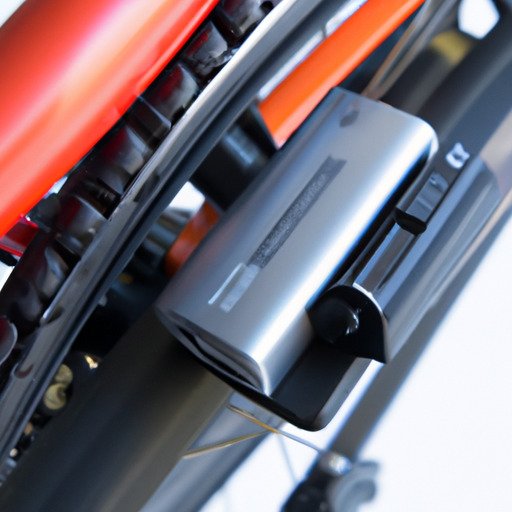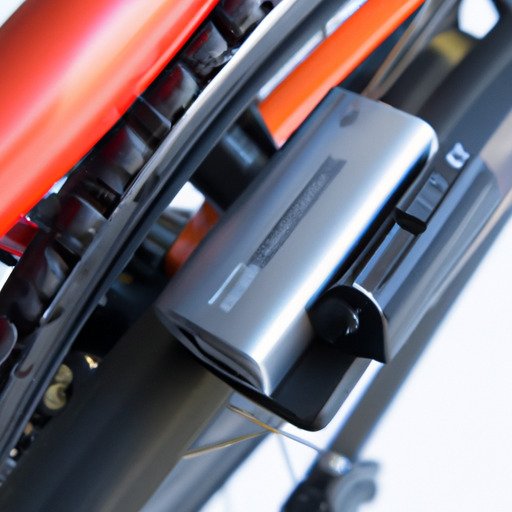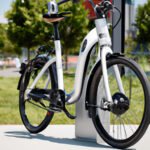
Are you tired of constantly having to recharge your e-bike’s battery? Do you wish there was a way to make it last longer between charges? Well, you’re in luck! In this article, we’ll explore some tips and tricks on how you can extend the battery life of your e-bike, so you can spend more time riding and less time worrying about power. Whether you’re a casual rider or a daily commuter, these strategies will help you get the most out of your e-bike’s battery.
If you’re interested in learning how to maximize the battery life of your e-bike, you’ve come to the right place. In the following paragraphs, we’ll discuss various methods that can help you increase the efficiency and longevity of your battery. From adjusting your riding style to implementing some simple maintenance practices, we’ve got you covered. So, keep reading to discover the secrets to prolonging the battery life of your e-bike and enjoy longer rides with ease.
1. Proper Charging and Maintenance
1.1 Charging to Full Capacity
One important factor in extending the battery life of your e-bike is to ensure that you charge it to its full capacity. This means allowing the battery to reach 100% charge before unplugging it from the charger. Charging it partially or using it while it’s still charging can affect the overall lifespan of the battery. Therefore, it’s best to be patient and give your battery the time it needs to reach its maximum capacity.
1.2 Avoid Overcharging
While it’s important to charge your e-bike’s battery fully, it’s equally important to avoid overcharging it. Overcharging can cause the battery to overheat, which can lead to reduced battery life and potential safety hazards. To prevent overcharging, make sure you unplug the charger as soon as the battery reaches its full capacity. Most e-bikes have a built-in charging system that automatically stops the charging process once the battery is fully charged.
1.3 Regularly Maintain Battery
Regular maintenance of your e-bike’s battery is crucial for prolonging its lifespan. This includes checking the battery’s connections, cleaning the terminals, and ensuring that it’s securely attached to the bike. It’s also recommended to clean the battery regularly using a damp cloth to remove any dirt or debris that may accumulate on its surface. Additionally, keeping the battery clean and dry will help prevent corrosion and improve its overall performance.
1.4 Store at Optimal Temperature
Proper storage of your e-bike’s battery is essential for maintaining its longevity. Extreme temperatures, whether too hot or too cold, can have a negative impact on the battery’s performance and overall lifespan. It’s best to store the battery in a cool and dry place, away from direct sunlight and extreme temperature fluctuations. This will help prevent the battery from overheating or freezing, which can cause irreversible damage. A temperature range of 50°F to 77°F (10°C to 25°C) is considered ideal for battery storage.
2. Optimize Riding Habits
2.1 Use Pedal Assist Mode
Utilizing the pedal assist mode on your e-bike can help extend the battery life significantly. This mode allows the motor to provide assistance while you pedal, reducing the strain on the battery and conserving energy. By utilizing the pedal assist mode, you can increase your travel distance on a single battery charge, making your e-bike more efficient and economical.
2.2 Avoid Frequent Acceleration and Braking
Frequent acceleration and braking can drain the battery quickly and reduce its overall lifespan. Instead, try to maintain a steady pace and avoid sudden bursts of speed or unnecessary braking. By maintaining a consistent speed, your e-bike’s motor can operate more efficiently, resulting in less strain on the battery.
2.3 Maintain a Steady Speed
Keeping a steady speed while riding your e-bike can also help extend the battery life. Constantly changing speeds or frequent acceleration and deceleration can strain the battery and drain its energy faster. Instead, try to maintain a consistent speed that feels comfortable for you and allows the motor to work optimally without excessive energy consumption.
2.4 Choose Efficient Routes
Choosing efficient routes can make a significant difference in the battery life of your e-bike. Avoiding steep inclines or rough terrains can reduce the strain on the motor and battery, allowing for a longer travel distance on a single charge. Opting for smoother, flatter routes can help conserve energy and maximize your e-bike’s battery life.

3. Monitor and Control Power Consumption
3.1 Adjust Power Settings
Many e-bikes come with different power settings that allow you to adjust the level of assistance provided by the motor. Lowering the power setting when riding on flat terrains or when you have sufficient energy can help conserve the battery’s charge. Only switch to higher power settings when necessary, such as when tackling steep hills or strong headwinds.
3.2 Limit Use of Power-Draining Features
Certain features on your e-bike, such as lights, horn, or displays, can drain the battery’s power quickly. While these features are important for safety and convenience, it’s advisable to use them sparingly, especially when the battery is running low. Consider using rechargeable LED lights instead of conventional lights that draw power directly from the battery.
3.3 Minimize Use of Throttle Mode
Most e-bikes come with a throttle mode that allows you to control the speed of the bike without pedaling. While this can be convenient, using the throttle mode excessively can drain the battery rapidly. It’s best to reserve the throttle mode for situations when you really need it, such as for quick acceleration or when you’re fatigued and need assistance.
4. Proper Tire Inflation and Maintenance
4.1 Maintain Proper Tire Pressure
Proper tire inflation is not only important for your comfort while riding but also for the efficiency of your e-bike and its battery life. Underinflated tires can create more resistance, causing the motor to work harder and drain the battery faster. On the other hand, overinflated tires can reduce traction and negatively impact your riding experience. Regularly check and maintain the proper tire pressure recommended by the manufacturer to ensure optimal performance and battery efficiency.
4.2 Regularly Check for Tire Wear and Damage
Keeping an eye on your e-bike’s tires for signs of wear and damage is essential to prevent any potential problems that may result in decreased battery life. Worn-out tires or tires with punctures can cause the motor to work harder and put additional strain on the battery. Regularly inspect the tires for any signs of wear, such as uneven tread wear or visible punctures, and replace them as necessary to maintain optimal battery efficiency.
4.3 Optimize Tire Size and Tread Pattern
The choice of tire size and tread pattern can have an impact on your e-bike’s battery life. Larger tires tend to provide better stability and traction, especially on uneven surfaces, but they may also require more energy to rotate. Choosing a tire size that suits your riding needs and conditions can help optimize the battery’s performance. Additionally, selecting a tread pattern that is suitable for the majority of your riding surfaces can improve efficiency and reduce unnecessary energy consumption.

5. Weight Reduction and Distribution
5.1 Remove Unnecessary Accessories
Reducing the weight of your e-bike can help improve its overall efficiency and extend the battery life. Remove any unnecessary accessories or items that add unnecessary weight, such as baskets, racks, or bags, when they are not needed. The lighter your e-bike is, the less strain it puts on the motor and battery, allowing for a longer travel distance on a single charge.
5.2 Distribute Weight Evenly
Proper weight distribution is crucial for maintaining stability and optimizing battery performance. Make sure to evenly distribute weight between the front and rear of the e-bike to prevent excess strain on the motor and ensure a balanced ride. Avoid carrying heavy loads on just one side of the bike, as it can negatively impact the battery’s efficiency and overall performance.
5.3 Consider Lighter Components
When replacing or upgrading components on your e-bike, consider opting for lighter alternatives. Lighter components, such as carbon fiber frames or aluminum alloy parts, can help reduce the overall weight of the bike. This, in turn, puts less strain on the motor and battery, allowing for more efficient energy consumption and extended battery life.
6. Take Advantage of Regenerative Braking
6.1 Understand Regenerative Braking
Regenerative braking is a feature available on some e-bikes that allows the motor to recover and store energy when the brakes are applied. This helps to recharge the battery to a certain extent while also assisting in slowing down the bike. Understanding how regenerative braking works and using it effectively can help extend the battery life of your e-bike.
6.2 Utilize Braking Techniques to Recapture Energy
Incorporating proper braking techniques while riding your e-bike can help optimize energy usage and prolong the battery’s lifespan. Instead of relying solely on your e-bike’s brakes, try to anticipate stops and gradually reduce speed by releasing the throttle and utilizing regenerative braking. By doing so, you can recapture energy and reduce the strain on the battery, ultimately extending its life.
7. Efficient Battery Usage Strategies
7.1 Plan Rides to Optimize Battery Usage
Planning your rides strategically can make a significant difference in the battery life of your e-bike. Prioritize shorter, more frequent rides instead of a single long ride if possible. This allows the battery to undergo fewer deep discharge cycles, which can reduce its overall lifespan. Additionally, consider charging the battery to around 80% capacity if you only plan on riding short distances, as this can put less stress on the battery.
7.2 Time Charging Cycles Appropriately
Timing your charging cycles appropriately can also help extend the battery life. Avoid leaving the battery fully charged for extended periods when you don’t intend to ride the e-bike. Similarly, avoid allowing the battery to drain completely before recharging it. Maintaining the battery charge level between 20% and 80% is considered ideal for optimal battery health and longevity.
8. Weather Considerations
8.1 Cold Weather Precautions
Cold weather can affect the performance and efficiency of your e-bike’s battery. In cold temperatures, the battery’s capacity can temporarily reduce, leading to a decrease in mileage. To counter this, try to store your e-bike in a warmer environment and keep the battery at room temperature before riding. If necessary, use insulated battery covers or blankets to maintain a stable temperature during your rides.
8.2 Hot Weather Precautions
High temperatures can also impact your e-bike’s battery life. Excessive heat can cause the battery to degrade faster and reduce its overall lifespan. To mitigate this, avoid leaving your e-bike in direct sunlight or in extremely hot environments. If possible, remove the battery when not in use and store it in a cool place. This will help preserve the battery’s performance and extend its lifespan.
9. Battery Replacement and Upgrades
9.1 Determine Battery Health
Over time, your e-bike’s battery will naturally degrade and lose its capacity. Monitoring the health of your battery is crucial for maintaining optimal performance. Most e-bike manufacturers provide software or diagnostic tools that can help you determine the health and remaining capacity of your battery. If you notice a significant decrease in battery performance or capacity, it may be time to consider a replacement or upgrade.
9.2 Consider Upgrading Battery Technology
If you find that your current e-bike battery no longer meets your needs, considering an upgrade to a more advanced battery technology may be a viable option. Newer battery technologies, such as lithium-ion or lithium polymer batteries, offer improved energy density and longer lifespans. Upgrading to a higher-capacity battery or a battery with a higher voltage can significantly enhance the overall performance and battery life of your e-bike.
10. Conclusion
By following these tips, you can extend the battery life of your e-bike and ensure optimal performance for years to come. Proper charging and maintenance, optimizing riding habits, monitoring power consumption, maintaining tire condition, reducing weight, utilizing regenerative braking, implementing efficient battery usage strategies, considering weather conditions, and knowing when to replace or upgrade your battery are all essential factors to consider in maximizing the lifespan of your e-bike’s battery. With proper care and attention, you can enjoy longer rides and get the most out of your e-bike’s battery. So get out there and start pedaling, knowing that you’re taking the necessary steps to preserve the life of your e-bike’s battery.




















